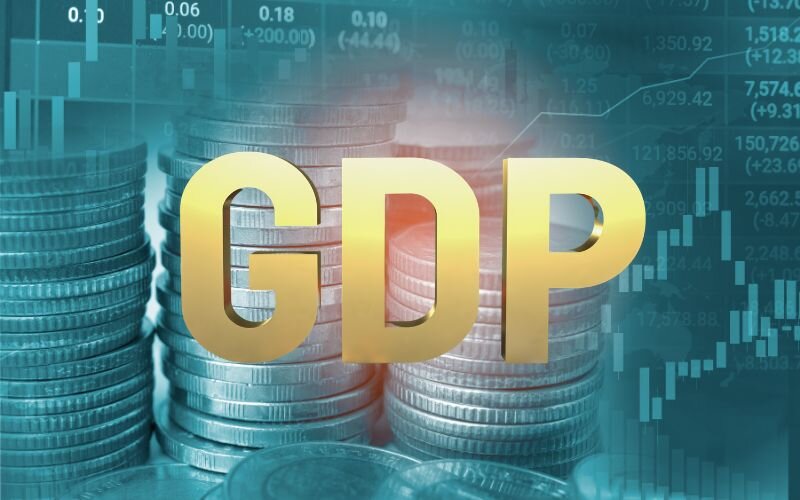Imagine the thrill of decoding the economy’s pulse. I know that feeling well where every shift in numbers sparks opportunity or signals caution. Policymakers, investors, and business leaders lean on key economic indicators to navigate the financial world’s ups and downs.
As someone who closely follows the markets, I’ve come to realize that these indicators aren’t just for economists, they're a compass for anyone aiming to take control of their finances.
Five metrics stand tall in this dynamic landscape: Consumer Price Index (CPI), Gross Domestic Product (GDP), Employment Rates, Inflation, and Exchange Rates. I’ve seen how even a minor shift in CPI can send shockwaves through the stock market and ripple across currency exchange rates. Mastering these isn’t just for experts, it's your ticket to thriving in today’s fast-paced markets.
In this article, I’ll walk you through these vital indicators, reveal their profound impact, and empower you to seize control of your financial future from stock market wins to savvy forex trades.
Key takeaways:
- Master the economy’s pulse: Mastering key economic indicators like CPI, GDP, Employment, Inflation, and Exchange Rates is your gateway to financial empowerment for traders and investors alike."
- CPI signals price shifts: Track rising costs of everyday goods to anticipate inflation and its impact on your wallet and investments.
- GDP reflects economic strength: A soaring GDP fuels job growth and investor confidence, while a dip warns of recession risks.
- Employment drives momentum: Strong job numbers spark consumer spending, while rising unemployment signals economic slowdowns.
- Inflation erodes purchasing power: Moderate inflation keeps markets healthy, but runaway inflation can crush savings and trigger rate hikes.
- Exchange rates shape global trade: Currency fluctuations open doors for forex traders and affect everything from imports to travel costs.
- Stay proactive: Use our checklist to monitor these indicators, empowering you to make bold, informed financial decisions.
1. What is the consumer price index (CPI)?
The Consumer Price Index (CPI) tracks the average change over time in the prices paid by urban consumers for a representative basket of goods and services. It is the most widely used measure to monitor inflation and shifts in the cost of living. I often use CPI as an early signal to adjust my portfolio, especially during periods of strong price volatility.
Key points:
- What it measures: Price fluctuations in categories like food, housing, transportation, clothing, and healthcare.
- Reported by: U.S. Bureau of Labor Statistics (BLS), on a monthly basis.
- Formula: CPI=(Cost of basket in current year/Cost of basket in base year)×100
Why CPI Matters:
- Acts as a key indicator of inflationary trends or deflationary pressure.
- Influences the Federal Reserve's interest rate decisions.
- Determines adjustments in wages, pensions, and Social Security.

2. What is Gross Domestic Product (GDP)?
Gross Domestic Product (GDP) represents the total monetary value of all final goods and services produced within a country over a specific period. It’s the go-to benchmark for evaluating a nation’s overall economic performance.
Key points:
- Components: Consumption + Investment + Government Spending + Net Exports.
- Types of GDP:
- Nominal GDP: Measured at current market prices.
- Real GDP: Adjusted for inflation.
- GDP per capita: Reflects average income and living standards.
Why GDP matters:
- Reflects economic health and growth potential.
- Higher GDP growth typically signals strong labor markets and investor confidence.
- Stagnant or negative GDP growth can indicate recessionary risks.

3. Employment indicators: Labor market strength
Employment metrics offer a clear view into the state of the labor market and, by extension, the health of the broader economy.
Key Metrics:
- Unemployment rate: Percentage of job-seeking individuals in the labor force.
- Nonfarm payrolls: The monthly count of jobs gained or lost in the U.S. economy, excluding farm employees, private household workers, nonprofits, the self-employed, and active-duty military.
- Labor force participation rate: The percentage of people of working age who are employed or actively looking for employment.
Why they matter:
- Higher employment boosts consumer spending and economic momentum.
- Rising unemployment often correlates with slower GDP growth and recessionary fears.
- Wage growth contributes to inflation expectations and may influence policy.

4. Inflation: Understanding the erosion of purchasing power
Inflation is the overall increase in prices for goods and services over a period, which reduces the value of money’s purchasing power.
Primary causes:
- Demand-pull inflation: Demand outpaces supply.
- Cost-push inflation: Rising input costs drive price increases.
- Built-in inflation: Wage and price increases feed into one another.
Why inflation matters:
- Moderate inflation (around 2%) is often seen as healthy for growth.
- Elevated inflation often leads to increased interest rates and puts pressure on consumers.
- Deflation can lead to economic stagnation or contraction.
Central banks like the Federal Reserve often target a 2% annual inflation rate to balance growth and price stability.

Central banks like the Federal Reserve aim for a target inflation rate of around 2% annually to balance growth without overheating.
5. Exchange rates: Understanding currency value dynamics
Exchange rates indicate how much one currency is worth compared to another and are essential for global trade and investment activities.
Key points:
- What it measures: The relative value of a country’s currency against others (e.g., USD/VND).
- Reported by: Central banks, financial institutions, and forex markets.
- Factors influencing exchange rates: Interest rates, inflation, economic stability, and geopolitical events.
Why exchange rates matter:
- Impacts import and export prices, thereby shaping the trade balance.
- Impacts foreign investment flows and multinational corporate earnings.
- Critical for forex traders analyzing currency market trends.
For a deeper dive into how exchange rates impact trading, explore forex trading strategies.
6. How these indicators work together
Economic indicators don’t operate in silos, they are deeply interconnected.
For example:
- Rising GDP usually reduces unemployment.
- Lower unemployment may drive wage increases, fueling inflation.
- Inflationary pressure can lead central banks to raise interest rates to cool the economy.
Tracking these indicators together helps analysts create more accurate economic forecasts and investment strategies.
See more blog posts:
7. Real-world applications of key economic indicators
Here’s how different groups use these vital statistics:
- Investors: Predict stock market trends, bond yields.
- Businesses: Plan production, hiring, and expansion strategies.
- Government policymakers: Set fiscal and monetary policy.
- Everyday consumers: Understand price trends and job market health.
8. How key economic indicators affect everyday life
While these indicators seem abstract, their impact is felt daily:
- CPI increases may mean higher grocery or utility bills.
- Strong employment data can improve job prospects and wage negotiations.
- Rising inflation erodes purchasing power and influences the returns on savings.
- GDP slowdowns can signal tighter credit conditions and cautious hiring.
Being economically informed helps individuals make better personal finance decisions, from investments to major purchases.
9. Checklist: How to monitor economic indicators
Keep a close watch on critical economic indicators to stay ahead of shifts in the economy. This checklist provides a practical guide to tracking essential data releases and trends, helping you make informed financial and investment decisions with confidence.
- Follow monthly CPI and employment reports from the Bureau of Labor Statistics.
- Review quarterly GDP releases by the Bureau of Economic Analysis.
- Watch Federal Reserve meetings and inflation projections.
- Track wage growth and labor participation statistics.
- Monitor exchange rate trends via forex platforms or financial news.
- Pay attention to inflation expectations in bond markets (e.g., TIPS spread).
10. FAQ: Key economic indicators
10.1. How does CPI differ from overall inflation?
CPI tracks price changes for a fixed selection of goods and services, while inflation reflects the overall rise in prices throughout the economy. CPI is one tool used to measure inflation.
By understanding the basics of forex fundamental analysis, traders can better interpret the implications of economic indicators such as inflation rates and employment data, allowing them to make more informed decisions in the dynamic Forex market.
10.2. Why is GDP growth important?
GDP growth signals a healthy economy with rising incomes, more jobs, and greater business profitability. Declining GDP suggests economic trouble.
10.3. How do employment numbers affect the stock market?
Positive employment reports often boost market confidence because they imply strong consumer spending and corporate earnings.
10.4. What happens if inflation gets too high?
If inflation surges unchecked, it can reduce purchasing power, lower real wages, spark rapid interest rate hikes, and potentially trigger a recession.
10.5. How often are these indicators updated?
- CPI: Monthly
- GDP: Quarterly
- Employment reports: Monthly
- Inflation reports: Monthly
11. Final thoughts
Key economic indicators aren’t just dry statistics; they are the heartbeat of the global economy. Whether you're trading forex, investing in stocks, or planning your personal finances, understanding metrics like CPI, GDP, employment data, inflation, and exchange rates gives you a critical edge.
At H2T Finance, we believe that informed decisions start with solid knowledge. That’s why we continue to break down complex economic concepts into practical insights for traders and investors at all levels. To stay updated on how these indicators shape the markets, visit our Market Analysis section where macro trends meet actionable strategies.



